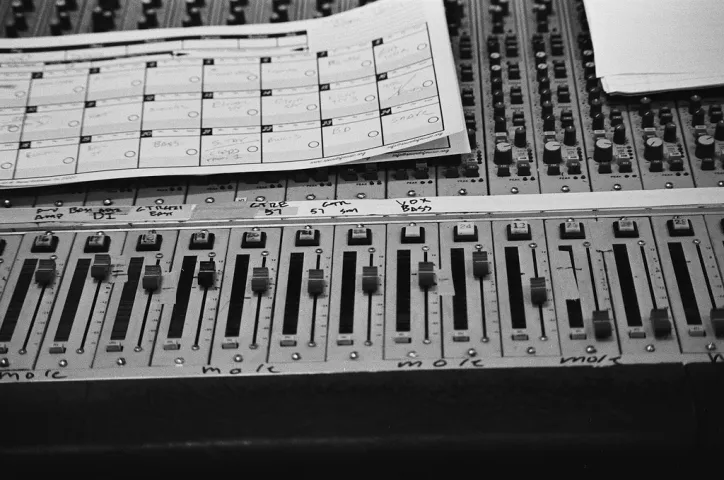Why 24 Tracks Is All You Need
Feb 01, 2013One of the things that first drew me to digital recording was the ability to have “unlimited” tracks. Even an early version of Cakewalk software I once had came loaded with “only” 32 tracks. At the time that blew away my simple 8 track Korg hard disk machine. I finally felt free to make the music of my dreams.
But ironically the availability of countless tracks in my DAW can lead to worse mixes and less creativity. How can this be? The truth is, sometimes too many tracks shows lack of vision and an inability to commit to a sound.

Via Ian Watkins Flickr
There’s A Problem
How many tracks do we really need? That’s debatable really. But according to legendary producer Daniel Lanois (U2) the magic number is 24:
If you can’t do it on 24 tracks, there’s a problem. – Daniel Lanois, Producer (U2, Bob Dylan, Peter Gabriel)
Now what does Lanois mean when he suggests you have a problem if you’re topping the “magic” 24 track mark? Is there something wrong with you if you have 25 tracks? 50? 100? It’s actually not uncommon these days for mixers to receive sessions of over 100 tracks waiting to be mixed down. But if have ever had the experience of mixing down a session with over 50 tracks you know how taxing it is.
Fewer Tracks, Fewer Competing Sounds
Here’s the truth. The biggest challenge in track heavy mixes is not just the time it takes to sift through them, but the over crowding of sonic space that occurs. When you have one guitar track, it can cut through a mix nicely. When you have 17 guitar tracks, you have a lot of similar material competing for the listener’s attention. The result? Muddy and undefined mixes.
The same is true with drums. Some of my best drum sounds were with only 3 or 4 mics. Sure you give up some control in the mix, but what you gain is clarity, simplicity, and again…fewer competing sounds. With fewer tracks to mix, EQ becomes a lot easier to apply. A few broad stroke cuts or boosts go a lot further than they do when 60 more tracks are clogging up your mix buss.
The 24 Track Mindset
I think what Lanois is getting at is this: if you need more than 24 tracks to communicate your musical vision, then you might need to go back to the drawing board and get more specific. What is really driving this song? What instruments are most important? What do you want to draw the listener’s attention to?
To have a 24 track mindset (in my mind) is to work under the invisible rule that your main mix should come from 24 tracks. Everything after that is icing on the cake. This “rule” acts more as a barometer than anything, making decide what the 24 most important tracks in your mix. Give them priority and let anything else you have simply support them.
Remember, there are no real rules in this craft. I’m merely giving you some helpful suggestions. I want you (and me) to think deeply about what we’re doing and bring some intentionality to the recording and mixing process. The 24 track mindset might be just what you need to make your next mix, your best.
Discover The 6 Steps for Creating a
Radio-Ready Song from Scratch"
Enter Your Email Below To Receive The Free 17-page PDF,
"6 Steps To A Radio-Ready Song"
We hate SPAM. We will never sell your information, for any reason.

